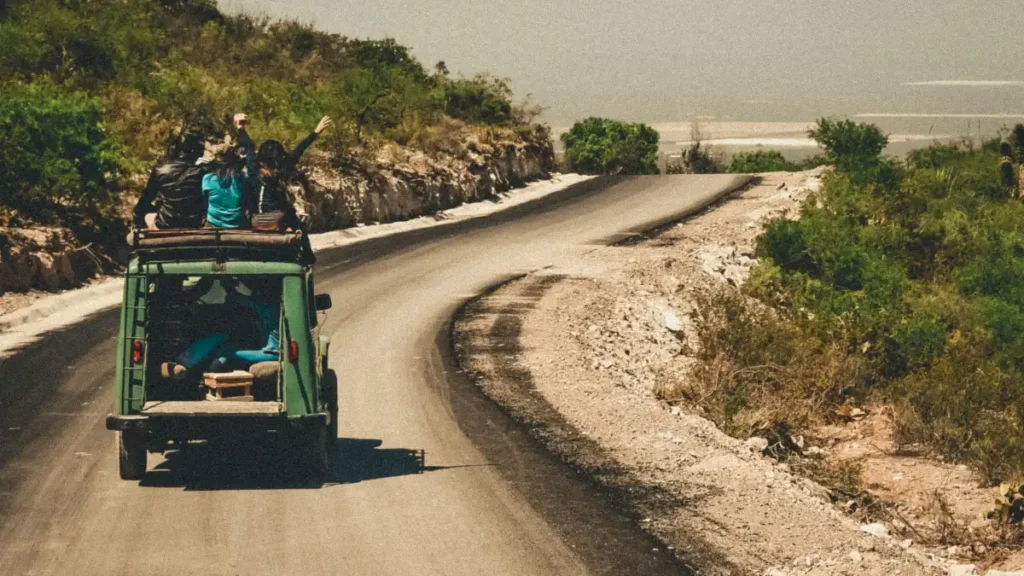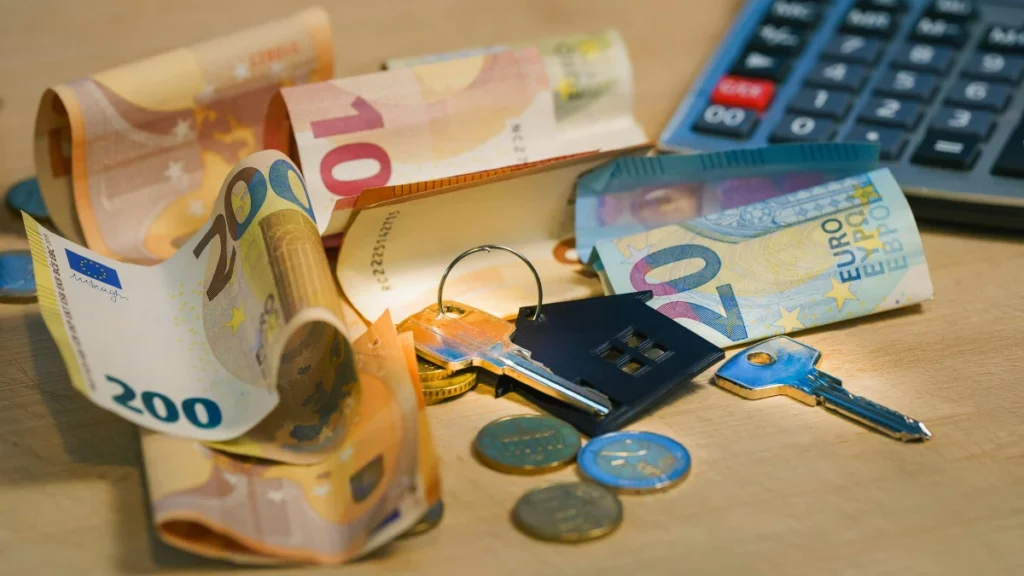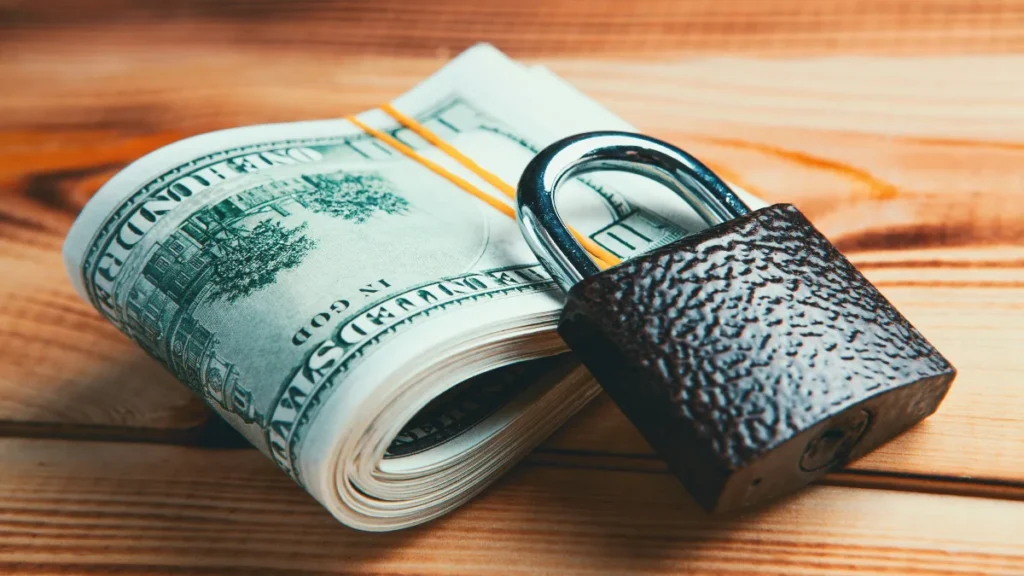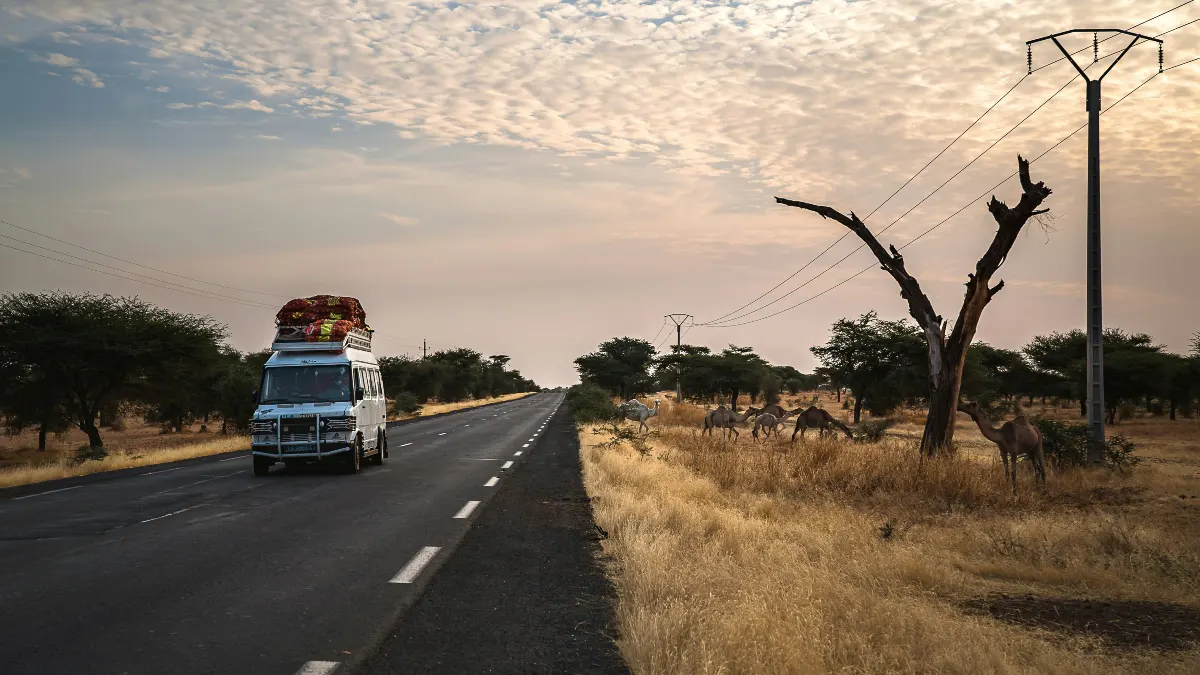The idea of an American cross-country road trip is legendary but what’s the one question that stops most people from grabbing their keys?
The cost. You’re dreaming of the open road, the changing landscapes, and the freedom of discovery, but you’re worried about the hidden expenses and the huge, unknown final price tag. You need a real number, not a guess, to turn that dream into a real plan.
This guide provides a no-nonsense, data-backed breakdown of the real cost to drive cross-country in 2025. We will cover everything from fuel and food to lodging and unexpected fees, moving beyond vague estimates to give you concrete data.
More importantly, we’ll show you exactly how to create a reliable cross-country road trip budget that fits your personal travel style, so you can start planning your adventure with financial confidence.
The Bottom Line: What’s the Average Cost of a Road Trip in 2025?

Let’s address the main question immediately. While the final number is highly personal, we can establish a clear starting point based on your travel style. Think of these as three different ways to experience the country.
For a standard 10-day, one-way trip covering roughly 3,000 miles, the costs can be broken down into clear tiers. A budget trip prioritizes savings and experience over comfort, while a comfort-focused trip prioritizes convenience and amenities. Most people fall somewhere in the middle.
The reason for such a wide range comes down to a few key variables that have an enormous impact on the final total. The single biggest factor is your choice of accommodation sleeping in a tent is fundamentally cheaper than sleeping in a hotel. The second is your vehicle’s fuel efficiency; a car that gets 40 miles per gallon will cost half as much in fuel as one that gets 20.
To put this in perspective, let’s look at the data. AAA’s 2025 “Your Driving Costs” report provides an excellent baseline. It calculates that a typical sedan costs around 75 cents per mile to operate. That figure includes not just gas, but also maintenance, tires, and depreciation. For a 3,000-mile trip, that’s $2,250 in basic vehicle costs alone.
- Budget Trip: $2,000 – $3,000. Involves camping/motels, self-cooked meals, and free activities.
- Mid-Range Trip: $3,500 – $5,000. Allows for motels/Airbnbs, a mix of self-cooked and restaurant meals, and some paid attractions.
- Comfort Trip: $5,500+. Features quality hotels, frequent dining out, and flexible spending on tours and entertainment.
Typical Budget Breakdown:
- Fuel: 30%
- Lodging: 30%
- Food: 20%
- Activities/Contingency: 20%
Breaking Down Your Cross-Country Road Trip Budget

An accurate budget is not a single, intimidating number; it’s a collection of smaller, manageable pieces. To truly get a handle on your cross-country road trip budget, you need to break it down into the four core categories where every dollar will go. Thinking of your spending in these separate buckets fuel, accommodation, food, and extras is the most effective way to prevent surprises and make planning feel less overwhelming. It allows you to see where you can save and where you might want to splurge.
1. Fuel: The Biggest Variable
Your fuel cost is a simple but powerful math problem. The reason this is the biggest variable is the massive difference in MPG between vehicles. Imagine a 2,800-mile trip from New York to Los Angeles. A hybrid getting 40 MPG with gas at $3.75/gallon will cost $262.50. An SUV getting 20 MPG will cost $525 double the price for the exact same drive. A common mistake is to only think about the price at the pump. The more important number is your car’s efficiency.
2. Accommodation: Your Home on the Road
After a long day of driving, where you rest your head is your second-largest expense. Your choice here defines your travel style. Camping is the most affordable at $20-$50/night, but requires you to have your own gear. Motels like Motel 6 or Super 8 offer convenience and basic comfort for $70-$120/night. Hotels and Airbnbs provide more amenities but will cost $130-$250+ per night.
3. Food & Drink: Fueling the Driver
Food is the easiest budget to control, but it requires a plan. Relying solely on restaurants and fast food can drain your funds faster than anything else. A daily budget for a solo traveler eating out for every meal can easily hit $100. A more moderate approach, with a mix of fast food and diners, might be $60-$80/day. However, the real power move is packing a high-quality cooler.
4. The “Everything Else” Fund: Activities & Emergencies
Think of this category as your fund for both fun and failure. It covers the planned costs like the $80 “America the Beautiful” National Parks Pass or museum tickets and the unplanned ones. The most common mistake travelers make is failing to budget for emergencies. Your contingency fund is not “extra” money for souvenirs; it is your car’s travel insurance. A flat tire, a dead battery, or a necessary oil change can cost hundreds of dollars.
Your Cross-Country Road Trip Budget: 2025 Guide
The Bottom Line: Average Costs by Travel Style
A 10-day, one-way trip covering ~3,000 miles can vary significantly. Choose the style that fits your adventure!
Budget Trip
- ✓ Camping/Budget Motels
- ✓ Mostly home-cooked meals
- ✓ Focus on free activities
Mid-Range Trip
- ✓ Comfortable Motels/Airbnbs
- ✓ Mix of packed food & dining out
- ✓ Some paid attractions
Comfort Trip
- ✓ Quality Hotels/Resorts
- ✓ Enjoy most meals at restaurants
- ✓ Flexible for tours & entertainment
Key Cost Percentages: Where Your Money Goes
For planning, expect your budget to break down roughly as follows:
(Highly depends on MPG)
(Biggest variable expense)
(Most controllable expense)
(Fun + emergency fund)
The Core 4: Breaking Down Your Budget
An accurate budget is a collection of smaller, manageable pieces. Here’s where every dollar goes:
1. Fuel: The Biggest Variable
Your car’s MPG makes a huge difference. Example: 2,800 miles.
- 40 MPG Car: ~$262.50
- 20 MPG SUV: ~$525.00
2. Accommodation: Your Home on the Road
Choose wisely; this is your second-largest expense.
- Camping: $20-$50/night
- Motels: $70-$120/night
- Hotels/Airbnbs: $130-$250+/night
Tip: Book ahead to avoid peak prices!
3. Food & Drink: Fueling the Driver
Easiest budget to control. Plan your meals!
- Eating Out Daily: ~$100/day (solo)
- Mixed Approach: ~$60-$80/day
- Cooler Power Move: Save time & money.
Tip: Pack a cooler for snacks & lunches.
4. The “Everything Else” Fund
Budget for both fun (activities) and failure (emergencies).
- Planned Fun: National Parks Pass, museums.
- Unplanned: Flat tire, oil change, battery.
- Rule: Add 10-15% of your total budget for emergencies.
Crucial: Your emergency fund is car travel insurance!
Actionable Tips on How to Save Money on a Road Trip

Understanding your costs is one thing; actively reducing them is another. The good news is that you don’t need to make huge sacrifices to have a major impact on your budget. The key is to be strategic and make small, smart choices that add up over thousands of miles. People often think saving money on a trip means less fun, but it’s actually the opposite. A smart budget reduces financial stress, freeing you up to enjoy the experience.
It is about efficiency, not deprivation. For every major cost category, there are simple tactics you can use to lower your spending. Why does this work? Because consistency is powerful. Saving just $15 a day over a 10-day trip adds up to $150 enough for a nice final dinner or another tank of gas. By adopting a few of these habits, you can dramatically lower your final cost to drive cross-country.
Here the followings:
- Fuel: Use apps like GasBuddy to find cheaper gas off-highway and drive smoothly to improve MPG.
- Lodging: Join free hotel loyalty programs and travel during less crowded “shoulder seasons” like spring and fall for better rates.
- Food: Pack lunches and snacks so you can spend your food budget on unique local meals instead of generic highway food.
- Vehicle: Get a pre-trip tune-up to prevent expensive roadside repairs and regularly check tire pressure to save fuel.
- Activities: Focus on free entertainment such as scenic overlooks, local parks, and exploring historic towns on foot.
- Routing: Use your map app’s “avoid tolls” feature to save money on long drives.
- Payments: Use a rewards credit card to get cash back on purchases like gas and dining.
Your Turn: Calculate Your Personal Cost to Drive Cross Country

This is where the plan becomes real. It’s time to move from averages and estimates to a concrete number that you can work with. This five-step process will give you a personalized budget that serves as the financial roadmap for your trip. Taking 20 minutes to do this now will save you hours of stress and worry later. Think of this not as a chore, but as the first official step of your adventure.
The goal here is to be realistic, not overly optimistic. Why? Because a budget that has some breathing room is one you’ll actually stick to. A common mistake is to budget for the absolute best-case scenario. People map the shortest possible route and assume they’ll only eat from their cooler. That’s a recipe for failure.
The best budgets account for human nature you will want to take a detour, and you will get tired of sandwiches. Building that buffer in from the start is the key to success.

